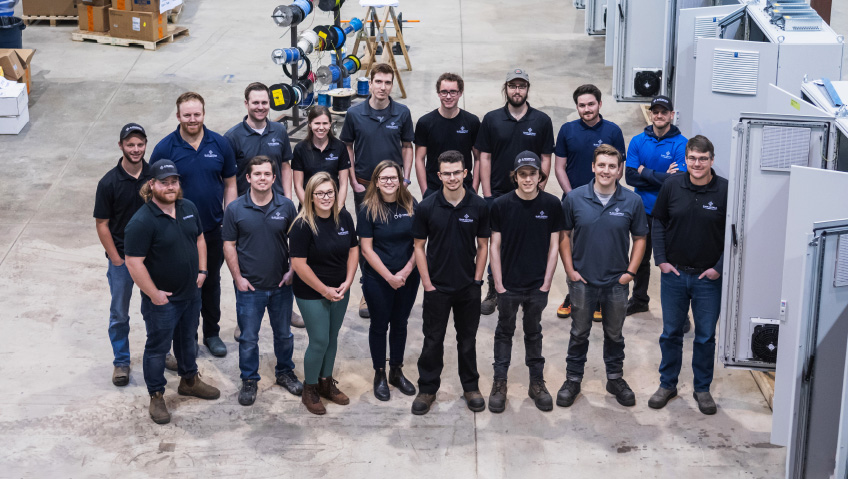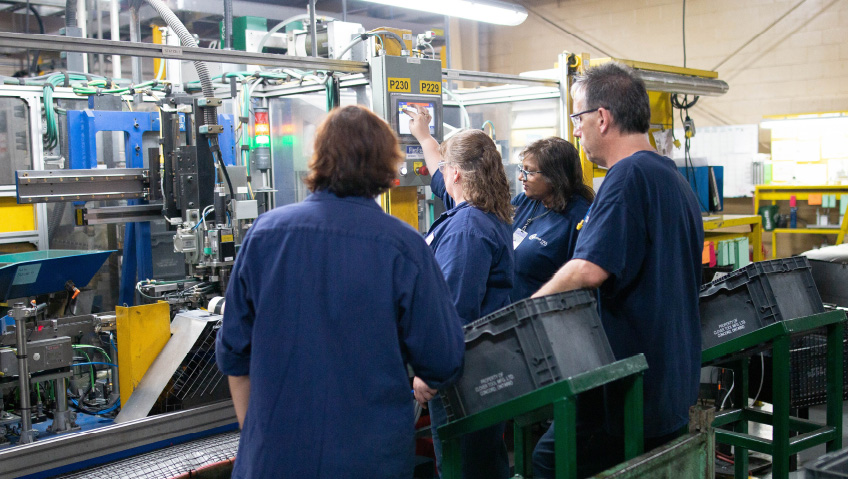While no one plans to get physically injured or exposed to dangerous working situations at their place of employment, getting hurt on the job is, unfortunately, a common occurrence. 2.8 million non-fatal workplace injuries were reported in 2019, as well as 888,220 nonfatal injuries and illnesses causing a private industry worker to miss at least one day of work, according to the Bureau of Labor Statistics (BLS). Preventing these types of injuries along with time missed — in fact, making a workplace as safe as possible — is imperative for all organizations. Unfortunately, the best of intentions don’t always lead to the best results.
Keeping the workplace safe from all types of hazards should be considered top priority for all companies, and while injuries, accidents, illnesses and sicknesses account thousands of hours of missed time every year in various businesses, using proven technology to not only discover where accidents are most commonly happening but help prevent them in the first place, is an effective step to keeping workers safe.
Humans are fallible and apt to make emotional based decisions, and this explains why about 90 percent of industrial accident reports indicate a failure on the part of the injured person or co-worker. But while humans are going to continue to make errors, workplaces also have a long way to go in ensuring workers of all skill levels and educational abilities are kept as safe and harm-free as possible. Inadequate training, for instance, is hardly the fault of a worker who may not receive all the information required to keep them from being injured while doing their job.
But where can a given company improve, and what can be done? Adopting an analytical approach to combating illness and accidents is an effective method of tackling the problem. We humans also tend to attribute accidents to reasons that might not always line up with reality, so collecting and analyzing relevant data is essential to uncovering the true cause of an incident in order to improve.
Many different factors can contribute to workplace safety incidents, and it’s not always obvious what changes will have an impact on safety. Fortunately, data-driven analytics can help organizations not only understand where potential issues lie and why, but how to help prevent them happening in the future.
According to Visier, a leading analytics company, “while using data to find the root causes of safety issues can be very effective, companies who do provide safety reports are often unable to link that data to the workforce metrics and attributes that impact the frequency and likelihood of safety incidents.”
Knowing that incidents happen isn’t enough to prevent them for occurring down the road, especially when only relying on human understanding. Using an HR analytics team to gather and analyze a company’s data in order to create effective training programs, prevention plans, and better hiring practices of employees who meet company standards are also vital preventative measures.
In order to better understand how analytics can benefit your workplace safety, it’s important to also understand what safety issues your company faces, whether lost time is decreasing or increasing, the comparability of injuries over different sites, and which areas show the highest number of injuries. Knowing all of this will assist you in not only seeing trends but how they actually affect your company’s productivity.
It’s also vital to find possible causes of injury by examining data for top employee attributes linked with higher and lower frequency and severity of safety incidents, along with near misses and lost time. Looking at new employees and their possible lack of experience might mean the need for more safety training. If older employees are being injured, refresher courses might be required for the entire company.
Constant vigilance and overall education is important in any type of business. Presuming that employees — new or tenured — can always remember the safety protocols, or will always follow them — is not only naive, but potentially dangerous.
Those in charge of keeping workers safe also play a big role. Understanding employees’ jobs and what is needed to keep them safe is vital for day-to-day safety protocol and putting preventive measures in place to not only keep accidents from occurring, but helping employees know how to do their jobs more safely.
In the blog post Workforce Safety Panel: A Data-Driven Approach to Reducing Workforce Injuries from Press Ganey, panellists stated that “incorporating predictive analytics into any organization’s data strategy, in addition to lagging indicators, is an important first step on this transformational journey. Whereas the latter provides key insights into the frequency, severity, and financial impact of workplace injuries, predictive analytics are essential for identifying risk and intervention techniques.” By uncovering trends of these injuries, leaders in the company can learn to predict, prevent and strategize to avoid them.
Of course, even the best injury prevention programs will be ineffective if employees aren’t educated to work safely, and all of the data gathered won’t make any difference if a company itself isn’t willing to take the steps to implement the changes.
James, formerly employed at a large, worldwide, billion-dollar company in Kitchener, Ont., was frequently subjected to potentially harmful working environments stemming from inadequate training procedures. He was trained by a fellow untrained employee, was highly encouraged to do more work than his body could physically sustain at the encouragement of his floor supervisor, and when he ended up harming himself, the company did not only not listen to his concerns, but asked him repeatedly if he employed elsewhere outside of company time, or “working out” in a gym that might have given him the injuries. When James asked if he would be compensated for sustaining injuries on the job, company leadership told him he would be switched to “light duty” instead. In order to keep getting paid, James was asked to spend eight hours a day sweeping instead of stacking.
“There were safety measures put in place to help keep us safe, but everyone ignored them because they slowed us down and we couldn’t make the quota pushed on us by the company,” says James. “Supervisors knew we were doing this but didn’t care. We got yelled at if we had a ‘slow’ shift.”
If James went over quota the company made money, but not the workers, which he didn’t know at the time. “The quota was a safe guideline so workers wouldn’t get hurt, but if we passed that quota, it would be expected every time.”
If companies are unwilling to understand how employees can injure themselves, data won’t be valuable when it comes to prevention. If unsafe practices continue to go unchecked and workers’ issues are ignored or downplayed, more serious injuries are sure to follow. In James’ case, he managed to recover after he quit, but that’s not always the case. Protecting workers in any industry needs to remains a top priority. Collecting and analyzing data can definitely help, but only if those organizations are willing to make the necessary changes in practices and behaviours.
Emotional and psychological safety is also of utmost importance, and one that many companies tend to overlook in favour of physical safety only. Like most labour statistics, TCIR and DART measure events where physical harm occurred—and to such a severe degree that employees were unable to work. Wanting to impress bosses, dealing with abuse in the workplace, both verbal and physical, threats and intimidation and all forms of workplace stress also need to be measured, analyzed and dealt with in order to have healthier, happier and more productive employees.
The Occupational Safety and Health Administration (OSHA) has recently updated its Guidelines for Safety and Health Programs that was released 30 years ago in order to reflect changing workplaces, the economy and various safety and health issues. Its recommended practices feature core elements including the main goal of preventing workplace injuries, illnesses, and deaths, along with mental and financial hardships workers, their families, and employers. Some of these include: Prevent workplace injuries and illnesses; Improve compliance with laws and regulations; Reduce costs, including significant reductions in workers’ compensation premiums; Engage workers; Enhance their social responsibility goals; Increase productivity and enhance overall business operations.
Above all, being proactive in the workplace when it comes to employee safety is a top priority, as, traditionally, dealing with problems in the aftermath is how companies have dealt with injuries and accidents. By investigating, analyzing and meeting the potential issues head on and anticipating any problems before they happen, a company can essentially prevent serious injuries. Adopting simple programs and goals and following through with diligence and monitoring of behaviours and practices, a company can work to achieve better and more effective safety levels in all areas of their business.
James, who is no longer employed at his former company, is still suffering the lingering effects of neglectful training and overwork that has caused damage to his elbows, but he’s grateful it’s not a permanent injury.
“Companies need to listen to their workers and understand when they’re being worked too hard or when situations are dangerous. Bodies can only do so much and can only be pushed so hard,” he says. “I’m one of the lucky ones. I was able to quit and find something else, but not everyone can do that.”






